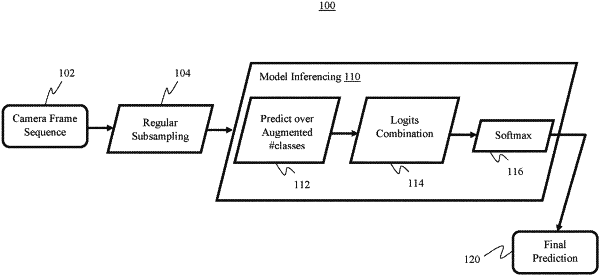| CPC G06V 10/7747 (2022.01) [G06V 10/62 (2022.01); G06V 10/764 (2022.01)] | 20 Claims |

|
1. A method for augmenting video sequences in a video reasoning system, the method comprising:
randomly subsampling a sequence of video frames captured from one or more video cameras;
randomly reversing the subsampled sequence of video frames to define a plurality of sub-sequences of randomly reversed video frames;
training, in a training mode, a video reasoning model with temporally augmented input, including the plurality of sub-sequences of randomly reversed video frames, to make predictions over temporally augmented target classes;
updating parameters of the video reasoning model by a machine learning algorithm by discarding a final prediction to retain the temporally augmented target classes with corresponding original classes; and
deploying, in an inference mode, the video reasoning model, with overfitting suppression through a learned temporal order of video frames to determine the original classes, in the video reasoning system to make the final prediction related to classify a human action in the sequence of video frames.
|